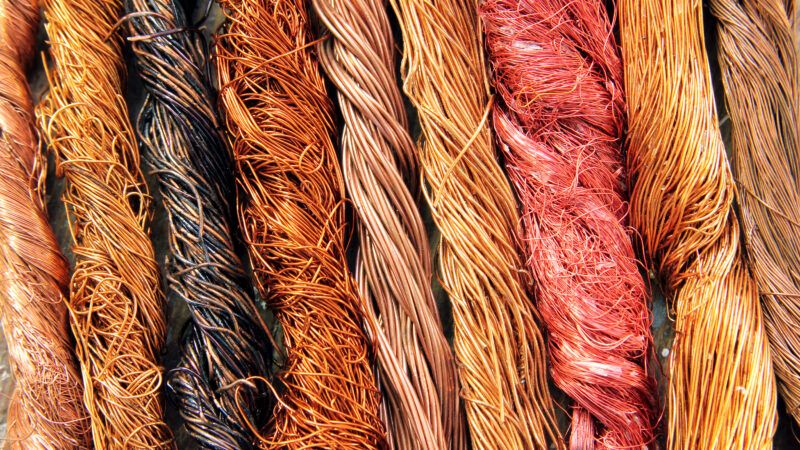Trump's 50 Percent Copper Tariff Will Drive Up Prices for Tech, Homes, Military Equipment, and More
It might be the Trump administration's most foolish trade policy idea yet.

Newly announced tariffs on imported copper might be the Trump administration's most foolish trade policy yet. It is a move that will force American industries to pay significantly higher prices for a metal that is essential for everything from tech manufacturing to homebuilding.
"Copper is necessary for Semiconductors, Aircraft, Ships, Ammunition, Data Centers, Lithium-ion Batteries, Radar Systems, Missile Defense Systems, and even, Hypersonic Weapons, of which we are building many," Trump wrote Wednesday on Truth Social, as he announced a new 50 percent tariff on all copper imports starting on August 1.
It is exactly because of all those uses that this new tariff is a terrible idea. America has a lot of copper—it was the world's sixth-largest copper producer last year, according to U.S. Geological Survey data—but American demand for copper is even higher. The U.S. imports about half the copper that it uses annually (mostly from allies like Chile and Canada).
Those imports are about to get a whole lot more expensive. Benchmark Mineral Intelligence, a London-based agency that tracks the prices of raw materials around the world, expects that American consumers will pay about $15,000 per metric ton of copper when the tariffs are imposed, while the rest of the world will see prices around $10,000 per metric ton.
Those higher prices will be passed along the supply chain for everything that's made with copper—which means anything containing wires, pipes, or computer chips.
Artificially hiking the price that Americans pay for copper is a particularly egregious own goal for an administration that supposedly wants to promote domestic manufacturing. The copper tariffs will put American copper-using industries at a distinct disadvantage relative to their rivals in other countries, where copper will be less expensive. Because copper is essential to electric and digital infrastructure, the impact of the tariffs could extend well beyond manufacturing.
"This is a terrible idea and will have a significant impact on the tech sector," warns Matt Mittelsteadt, a technology policy expert with the Cato Institute. Raising copper prices via tariffs will "massively strain the infrastructure that powers innovation," he added.
The White House believes that the tariffs will encourage more copper mining and production in the United States. That may happen in the long run, but it takes decades to develop new mines. A report published last year found that American mineral mines take an average of 29 years to get up and running, the second-longest period in the world (trailing on Zambia).
It would make a lot of sense for the Trump administration to do whatever it can to speed up the development of more mines, particularly as global demand for copper is projected to double in the next decade. There are "ample" copper reserves in the United States, the White House said in February.
Tariffs are the wrong way to go about doing that. For the foreseeable future, American industries will need to continue importing copper—but now will have to pay much higher prices to do so.
"The problem for Trump's somewhat naive economic vision is that the reality of the U.S. copper market is that it will be extremely difficult to get a meaningful boost to copper mining and processing in both the short and long terms," writes Clyde Russell, a commodities and energy columnist for Reuters. "The overall impact is likely to be higher inflation if costs are passed to consumers, or lower investment and employment if companies do what Trump has suggested and 'eat the tariffs.'"


Show Comments (42)